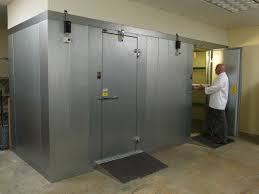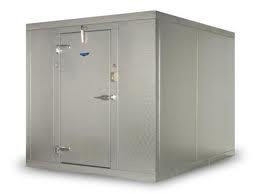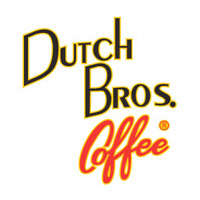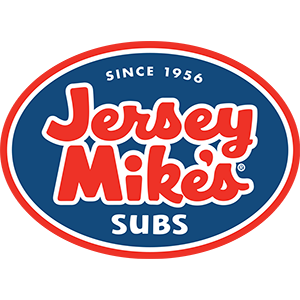Refrigeration Equipment: The Walk In Cooler
 As food service equipment goes, the walk in cooler is probably one of the most important pieces of refrigeration equipment a restaurant owner will invest in. As previously discussed, the right walk in cooler can drastically impact a restaurant’s bottom line. If the walk in cooler is too big, then the restaurant is keeping too much air cold. If this vital piece of refrigeration equipment is too small, then profits will be eroded by spoiled perishable items, and the restaurant owner’s food service equipment could be putting them out of business. So the walk in cooler is a very important piece of food service equipment.
As food service equipment goes, the walk in cooler is probably one of the most important pieces of refrigeration equipment a restaurant owner will invest in. As previously discussed, the right walk in cooler can drastically impact a restaurant’s bottom line. If the walk in cooler is too big, then the restaurant is keeping too much air cold. If this vital piece of refrigeration equipment is too small, then profits will be eroded by spoiled perishable items, and the restaurant owner’s food service equipment could be putting them out of business. So the walk in cooler is a very important piece of food service equipment.
Walk In Cooler Features
There are several features which can lend themselves to a walk in cooler operating efficiently. Quality door designs are very important for this piece of refrigeration equipment to operate effectively and have lasting durability. Rigid, reinforced door frames and heavy duty hinges provide maximum durability of your walk in cooler. During busy times, there will be plenty of in and out traffic with the door to your refrigeration equipment being opened and closed repeatedly. Poorly constructed doors or low quality hinges will drastically reduce the long term durability of your walk in cooler and require you to service this piece of food service equipment far too often.
Inside door releases are also a must for any walk in cooler. This is a safety feature that prevents food service employees from getting stuck inside the refrigerator or freezer. It is almost always part of any refrigeration equipment manufacturer’s standard features, but it’s a good idea to make sure it’s included with your walk in cooler when you have it installed.
Other important features for this piece of refrigeration equipment include an alarm system if the temperature in the walk in cooler is fluctuating widely. Oftentimes this can be the result of the door to your refrigeration equipment being left open accidentally, but there could also be a mechanical problem with the compressor or another part of your refrigerator or freezer could be malfunctioning. An alarm system will notify you of any issues before your valuable food service inventory items spoil.
Walk In Cooler Maintenance Requirements
 Keeping the air flowing smoothly and keeping condenser coils cleaned is vital to proper operation of any piece of refrigeration equipment. This means proper ventilation, regularly cleaning filters, and regular check-ups with a certified technician. From time to time the refrigerant will need to be replaced, and per state regulations this can only be done by a refrigeration equipment technician who is certified. When regular maintenance of your walk in cooler is not performed your are increasing the odds of it breaking down prematurely. Almost always, your walk in cooler will break down on the hottest day of the year when your establishment is busy and you need your food service equipment the most. To add insult to injury it will probably happen on a Saturday night when all of the refrigeration equipment technicians are unavailable.
Keeping the air flowing smoothly and keeping condenser coils cleaned is vital to proper operation of any piece of refrigeration equipment. This means proper ventilation, regularly cleaning filters, and regular check-ups with a certified technician. From time to time the refrigerant will need to be replaced, and per state regulations this can only be done by a refrigeration equipment technician who is certified. When regular maintenance of your walk in cooler is not performed your are increasing the odds of it breaking down prematurely. Almost always, your walk in cooler will break down on the hottest day of the year when your establishment is busy and you need your food service equipment the most. To add insult to injury it will probably happen on a Saturday night when all of the refrigeration equipment technicians are unavailable.
What Type Of Walk In Cooler Is Best For You?
A variety of walk in cooler options are available in addition to the size. For instance, they may be prefabricated by a refrigeration equipment company or they may be free standing. Almost always restaurants that have large perishable goods needs will have their walk in cooler prefabricated, but there is also the chance that they put this piece of food service equipment outside if their size requirements are too big to fit inside. A very large walk in cooler may have different floors, but for smaller versions shelving units are almost always a necessity for ease of access. Also the condenser for your refrigeration equipment can be in-place or remote depending on your needs.

 The Stationary Equipment Refrigerant Management Program covers all non-residential, fixed commercial refrigeration equipment and requires the reduction of refrigerant emissions from commercial refrigeration with high global warming potential. In other words, AB-32 limits the use of chlorofluorocarbons, hydrochlorofluorocarbons, perfluorocarbons and hydrofluorocarbons. While these substances were already regulated by the Environmental Protection Agency (EPA) through the US Clean Air Act, the Refrigerant Management Program as it relates to commercial refrigeration expands their control within the state of California.
The Stationary Equipment Refrigerant Management Program covers all non-residential, fixed commercial refrigeration equipment and requires the reduction of refrigerant emissions from commercial refrigeration with high global warming potential. In other words, AB-32 limits the use of chlorofluorocarbons, hydrochlorofluorocarbons, perfluorocarbons and hydrofluorocarbons. While these substances were already regulated by the Environmental Protection Agency (EPA) through the US Clean Air Act, the Refrigerant Management Program as it relates to commercial refrigeration expands their control within the state of California. Door hinges for your commercial refrigeration walk-in can be rubbed with petroleum jelly to make sure they continue to work well. If these develop a build-up of grease or grime, then their operation will not remain smooth. This means they will begin to stick resulting in your doors not closing automatically and the cold air escaping. Again this will result in lower efficiency for your commercial refrigeration walk-in and higher energy costs.
Door hinges for your commercial refrigeration walk-in can be rubbed with petroleum jelly to make sure they continue to work well. If these develop a build-up of grease or grime, then their operation will not remain smooth. This means they will begin to stick resulting in your doors not closing automatically and the cold air escaping. Again this will result in lower efficiency for your commercial refrigeration walk-in and higher energy costs. Whenever most of us think about refrigeration all we know about is the refrigerator we have in our home. We usually don’t consider the fact that the restaurants and grocery stores we patronize use commercial refrigeration to keep the food we buy from them preserved and fresh with commercial refrigeration. Commercial refrigeration differs from the cooling appliances we have in our homes mostly by size. There are other differences in commercial refrigeration such as the method by which the air is cooled. The choice for the restaurant owner or grocery store owner as to which type and size of commercial refrigeration they choose come down to the needs of their business.
Whenever most of us think about refrigeration all we know about is the refrigerator we have in our home. We usually don’t consider the fact that the restaurants and grocery stores we patronize use commercial refrigeration to keep the food we buy from them preserved and fresh with commercial refrigeration. Commercial refrigeration differs from the cooling appliances we have in our homes mostly by size. There are other differences in commercial refrigeration such as the method by which the air is cooled. The choice for the restaurant owner or grocery store owner as to which type and size of commercial refrigeration they choose come down to the needs of their business.







